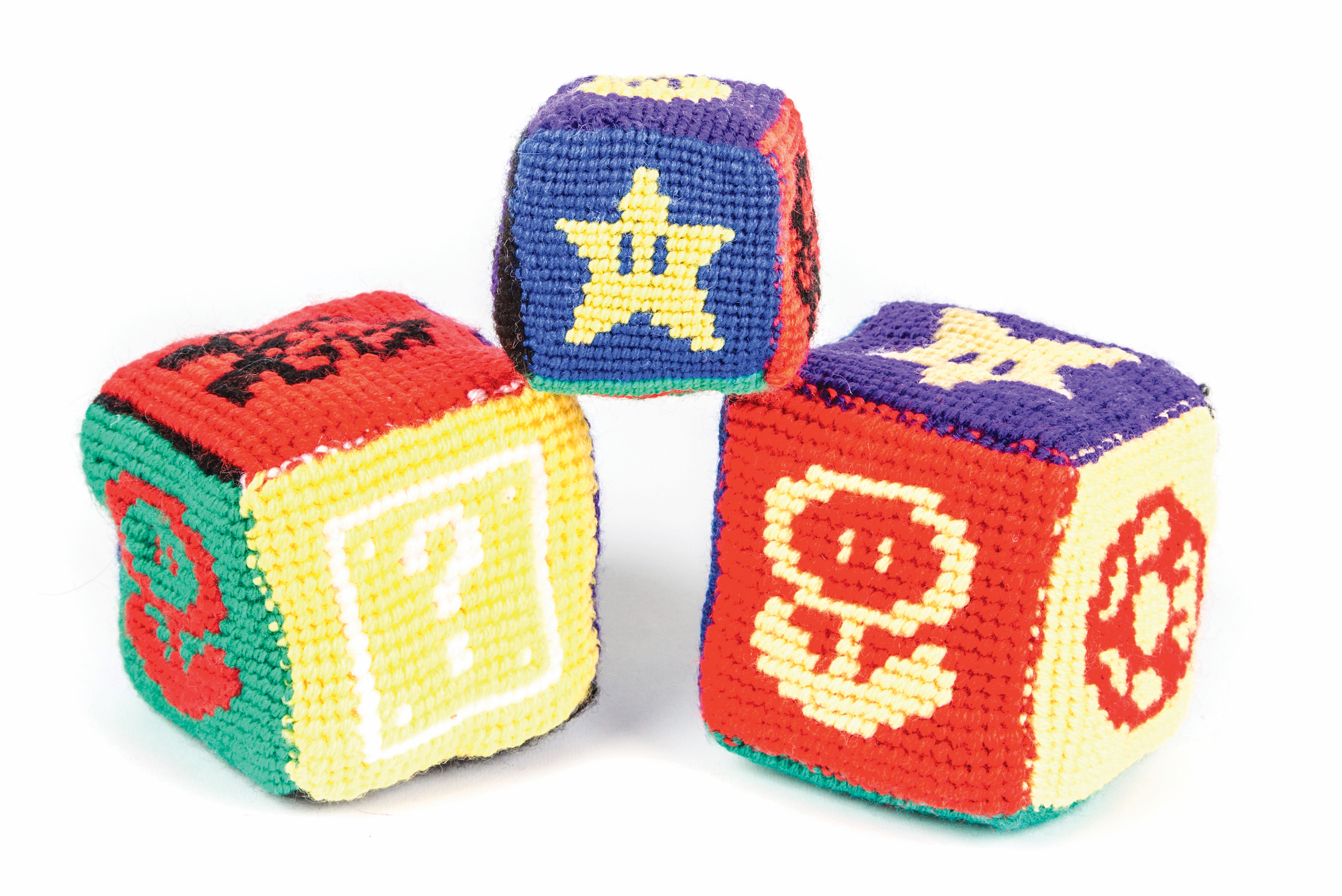
This is a soft play cube that I made with my 5-year-old nephew in mind, so he can have a real-life squishy Super Mario World in his room!
I’ve done macramé for 20 years. I learned as a schoolgirl when I started a craze for friendship braiding, and I worked out how to braid straight lines and swap over colors while experimenting.
You can easily convert simple pixel graphics, like the sprites in vintage video games, to a macramé pattern for making these fun soft toys. And you can scale them up to pillow size or bigger if you can find yarn bulky enough!
Pixels to Knots
I created these graphics of Mario and various power-ups using the classic Super Nintendo game Mario Paint, but you can use any drawing program, or just work out your grids on paper.






I adapted the 16×16 pixel grids (shown above) first worked out by Nintendo to fit in my macramé panels. Because the double half hitch knots are slightly higher than they are wide, I had to squash the images a little to keep things square (or cubic). So I simply deleted the top and bottom rows from my Mario Paint grids to create these 16×14 pixel instructions.



































